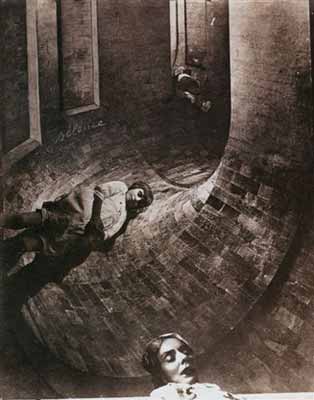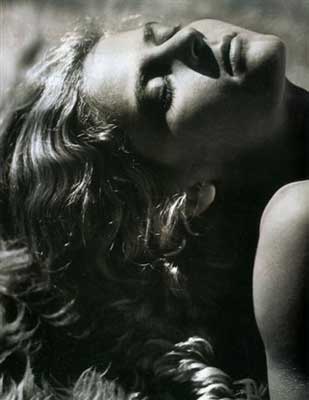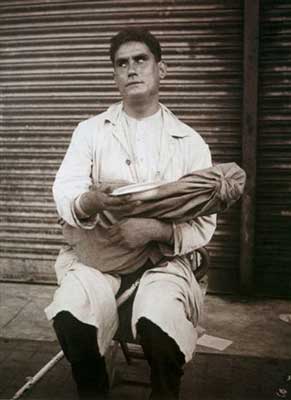
Silence, 1935-36.
Vintage gelatin silver print,
10 7/8" x 8 5/8"

Assia, nu sur la fourrure, 1934.
Vintage gelatin silver print,
11 3/4" x 9 3/8"

Mendiant aveugle, 1934.
Vintage gelatin silver print,
15 3/8" x 11 1/2"
In 1927, Dora Maar began studying painting in Paris, then quickly switched to photography at the École de Photographie de la Ville de Paris. In the following years, while she was in her 20s, she became prominent among the Surrealists (André Breton, Man Ray, Paul Eluard, and others) and produced a remarkable body of work that included photo montages, portraits, nudes, landscapes, fashion and advertising photography, and street scenes in Paris, London, and Barcelona. She took some pictures of Pablo Picasso, as he did of her, early in their relationship, which lasted from 1936 into 1946, including the famous series of the great master at work on Guernica in 1937, then gave up photography entirely for painting, at least partly because Picasso felt the former to be an inferior, or perhaps non-existent, art medium. After her emotional breakdown in 1945, and during the long reclusion that covered the last forty years of her life, until her death in 1997, Maar continued to write poetry and to paint, including a group of searing near-abstract landscapes in southern France, and even, in the 1980s, to revisit her photographic work.
The 49 photographs in this exhibition date from the late 1920s to 1938, probably the last year Maar took photographs. There is just one shot of Picasso, from about 1936; perhaps fittingly, he is asleep. Sleep as a state of being, and eyes, opened or closed, are important in Maar's work. As Mary Ann Caws writes in her perceptive book about Maar (Picasso's Weeping Woman: The Life and Art of Dora Maar), ". . . blind people and images of blindness appear and reappear in Dora Maar's work. True vision is interior vision: what Surrealism will call, finally, the interior model." Silence of 1935-36 is one of several photos in which figures from her street scenes, usually children, have been montaged into the spaces of vaults turned upside down (the vaults are those of the Orangerie at Versailles). The figures are lying down, asleep on the curved, stone vaulted ceilings. But there is no discomfort; the space seems perfectly natural, as it does to us when we lie on a bed and look up at the ceiling, or out the window at an angle . . . when we dream. Maar enters into a world that we are already in--though it may be hidden to us--as Buñuel and Dali did by slicing into an eye at the beginning of their film La chien Andalou of 1928, and Georges Bataille (who was Maar's lover in 1933-34) did in his novel Histoire de l'oeil, also of 1928.
Maar understood better than any artist of her time the naturalism of Surrealism. She knew that there was far more within every image, every person and place, than could possibly be described, that "interior vision" is more than matched by what is outside ourselves. The portrait of a person, for instance, contains, above all, the immanence and depth of the person. In the way Maar illuminates her figures, they emerge out of a pool of light and shade, so there is no doubt they exist, and are still becoming. The full sensual, intellectual, emotional person is the expression of that moment of time and space and light. In every portrait, and in every figure for that matter, the outlines of the bodies and their features, as the face, lips, eyes, nose, hair, and arm of Assia, nu sur la fourrure, for instance, are as though drawn by the hand of the artist, without in the slightest being made up.
This is what Maar knew about photography, and few others did or would; not that it could replicate reality but that it could see the world, like an artist, in its essential forms, extending beyond "reality." Monstre devant la mer has a strange, dinosaur-like figure standing on a beach looking out to sea. So the question is, what does the monster see? Is it the same thing we see, or think we know, looking across the primordial ocean, which from this view stretches as far as the eye can see, at least within the rectangle of the picture? But our view also includes the monster, which looks away from us and is not really a serious monster anyway . . . maybe just something in our (her) mind's eye. But it is there anyway, and without it there would just be the straight line of the sea and sky.